Tell us about your approach to photography. How it all started? What are your memories of your first shots?
Łukasz Biederman (LB): My interest in photography started when I was at the university. The school gave students unlimited access to a photography studio and to a darkroom. I really used to spend a lot of time there. After long hours in the darkroom I used to be coming back home late at night – or even early in the morning – happy with fruitful work done, with a bunch of fresh, just developed, still wet photographs to be dried later on my bedroom cupboard. When I think of how my photography interest started, my memories definitely go back to this period of time, when I was learning the magical procedure of developing pictures. It was a gorgeous view when you observed – in the magical ambience of red light and late night radio broadcast – how the images appeared on a blank sheet of photographic paper.
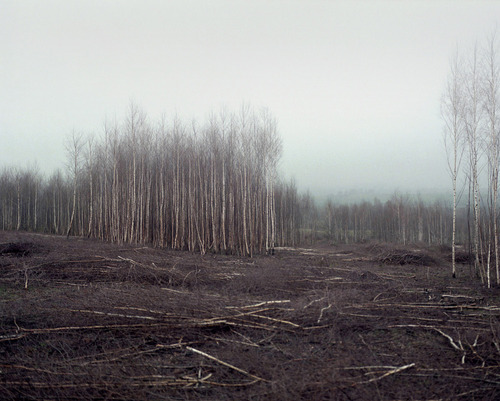
© Łukasz Biederman from the series ‘21 Rooms’
How did your research evolve with respect to those early days?
LB: My first pictures were completely random shots of anything that seemed interesting to me. I would shoot people in the streets, landscapes, cars, animals, and many more accidental things – actually with no common denominator. Nowadays I perceive photography rather in series than in single works. I do not have a habit of taking pictures of everything and everywhere, neither do I carry my camera always on me. I also developed a habit of composing an image first in my mind before I reach for the camera in a bag. Before I shoot, I also need to decide which series or what topic the image is going to fit then. This approach enables me to focus on a particular subject so I can avoid collecting lots of totally redundant images. Nowadays I am shooting definitely fewer pictures than I used to years ago.
About your work now. How would you describe your personal research in general?
LB: I am fortunate to live in a very interesting country. For hundreds years Poland has been always entangled with complex geopolitical changes. The history of this region is very multifaceted – and particularly the last 25 years has been a time of unbelievable changes. After the fall of communism in the 90’s, the country started to develop in an unusual way. The grey, communist country transformed into a free, multicolored world, full of ultramodern structures, places, shapes and possibilities. Additionally, all these crazy things have been happening just before my very eyes. I grew up in a reality filled with a weird mixture of styles and designs – medieval ruins mixed with WWII remains, communist buildings or ultramodern structures, wealthy property adjoining directly poor estates, big city structures contrasting with post-rural remains, everything covered with all types of patchy outdoor advertising. This world looks absolutely surreal to me and I like perceiving it this way.
In general, my photography interest lies in a field of changes mentioned above. Especially I prefer to depict places gradually disappearing from our cityscape, spaces that reflect this intricate history. Year by year, the Polish cityscape is changing so I hope that maybe in quite a short period of time my pictures will be a powerful record of the unusual cityscape that we currently live in. On the other hand, I do not perceive my pictures in a straight line as documentary photography. I think that most of them contain a lot of various elements, which let the viewer imagine numerous fictitious stories coming out from the image.
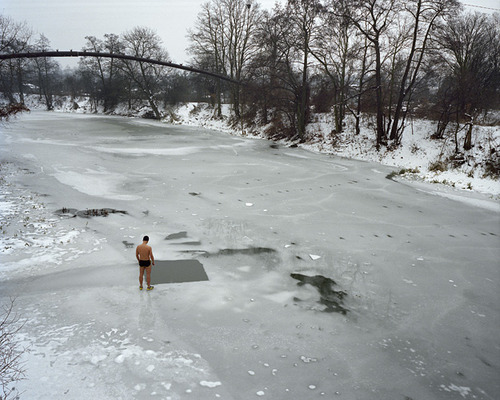
© Łukasz Biederman from the series '21 Rooms’
Do you have any preferences in terms of cameras and format?
LB: I usually photograph without hurry and the number of pictures I am used to taking is not a great deal. Thus I can afford to work with analogue negatives – medium or large format. There are two cameras I love using: Hasselblad 500 and Mamiya 7.
Tell us about your latest project entitled: “21 rooms”. What is it about? Could you explain the link between these rooms and landscapes that accompany them?
LB: The series ‘21 rooms’ depicts abandoned rooms at forgotten hotels in mountain resorts. The rooms have remained vacant since the last guest left long ago and then have became untouched –like hibernated – for a dozen years, until now. This state of hibernation has truly fascinated me. Moreover, it has inspired me to see a bit wider picture of sightseeing and traveling in general – the process that I observed years ago while living and growing up in a mountain resort. I saw tourists arriving and leaving, visitors with their vacation plans, hopes, expectations but often with their disappointments, too. Actually this state of disappointment became the dominant feature in ‘21 rooms’. The pictures of rooms in combination with cold, solitary landscapes are intended to be imbued with moisture, snow, frost, fog and wind – and at the same time filled with dissatisfaction, disenchantment and disappointed hopes.
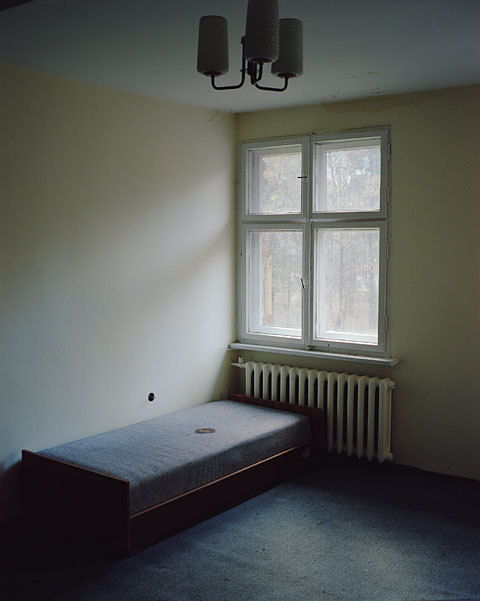
© Łukasz Biederman from the series '21 Rooms’
Your series “The city sleeps” is a close investigation of the suburban landscape at night. We noticed on your photoblog that you started taking nocturnes again after some time. What is so tempting about this nighttime scenery?
LB: Towns at night have their special energy that I really love. It is extremely quiet, streets are completely empty, everybody is sitting at home, watching TV or sleeping. The presence of people in the neighbourhood is only indicated by lights looming in house windows, TV flickering from insides or cars parked in backyards.
First of all, taking pictures at night is a great pleasure for me. Although the process of searching for interesting locations means long hours of driving; the whole action is a nice escape from everyday activities. Apart from the pleasure factor, it is much easier for me to depict the peculiar beauty of the Polish cityscape when shooting at night. I think that a rough image of the town – the boring, uninteresting image that we observe every day – seems to be much more interesting when portrayed in the night illumination. What emerges from the nocturnal cityscape is an illustration of a magnificent, mysterious, magical and solitary city. In reality, the human eye is not able to notice the unique play of light – only the photograph can illustrate that. So in that sense you can take a fresh look at everyday surroundings.
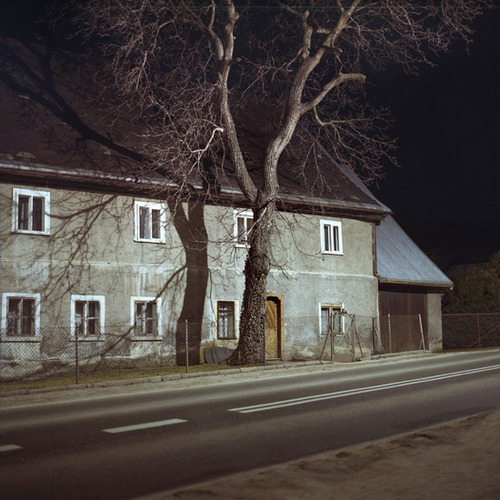
© Łukasz Biederman from the series 'The City Sleeps’
What kind of a role does your photoblog play in your photographic activity?
LB: The idea for the blog Rewiry Paranormalne was always to illustrate grotesque, surreal elements of seemingly ordinary reality. Hence the name of the blog which translates from Polish as Paranormal Districts. I tend to believe that the spirit of the blog has not changed so far.
Sharing my works on a regular basis seems really important to me. I do not want my pictures to be lying ‘in the drawer’, waiting for further publication in no definite time. The possibility of publicizing the images gives me much motivation to work on new pictures.
You are a photographer living and working in Poland. Could you comment on the Polish photography scene?
LB: When I watch American films I appreciate the large number of photographs hanging on walls at their homes. I think that in this sense we are still far from the USA. Actually it is quite unusual to find the photographs hanging in the average Polish home – and the photography in general is not perceived as an art by the Everyman here.
On the other hand I believe that the Polish photography scene is rapidly developing. We have a lot of photography events, festivals and first of all we have many great photographers who promote this art in Poland – and out of the country. I can name tens of Polish photographers who are truly inspiring me – like for example Rafał Milach, Wojciech Wieteska, Jan Brykczyński, Ula Tarasiewicz, Szymon Rogiński, Nicolas Grospierre, Maciek Stępiński, Tomasz Wiech and many more. Moreover, the number of young people who are interested in photography seems really promising.
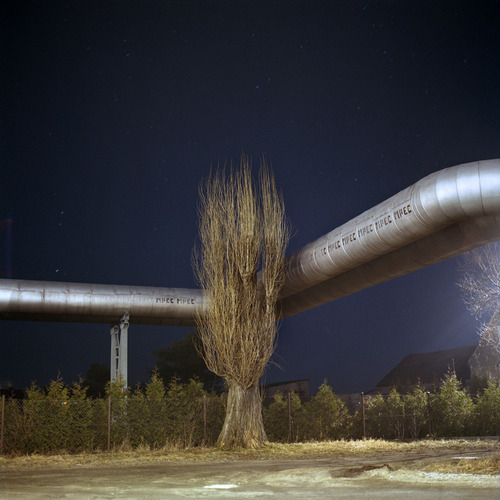
© Łukasz Biederman from the series 'The City Sleeps’
Is there any contemporary artist or photographer, even if young and emerging, that influenced you in some way?
LB: Of course, there are many of them. The favourites that come to my mind at the moment are for example Lynne Cohen, Alexander Gronsky, Todd Hido, Rafał Milach, Alec Soth…
Three photobooks that you recommend?
LB: ‘Disco’ by Andrew Miksys; ‘Play Ground’ by Jerohen Hofman and ‘Swell’ by Mateusz Sarełło.
Is there any show you’ve seen recently that you find inspiring?
LB: One of the most memorable shows I saw last year was Wiesław Rakowski’s ‘Zoological Archive’, curated by Michał Sita. The photographs taken between World War One and World War Two depict unique zoological exhibits from Poznań Zoo, including tens of dead, stuffed animals. The collection takes the viewer to a different world, full of strangeness and inexplicability. The animals look like weird figures from a dream although they existed in reality and in fact the pictures were probably taken for documentation purposes – as opposed to the intention of being a piece of art.

© Łukasz Biederman from the series 'The City Sleeps’
Projects that you are working on now and plans for the future?
LB: I am going to continue the series ‘The City Sleeps’ and I would like to make ‘21 rooms’ a more complete and coherent body of work. It is also possible that in a foreseeable future I will release a photo book with The City Sleeps images.
---
LINKS
Łukasz Biederman
Poland
share this page